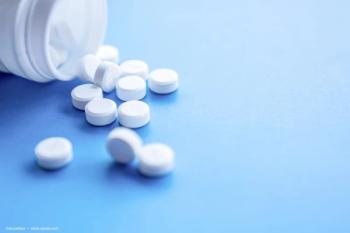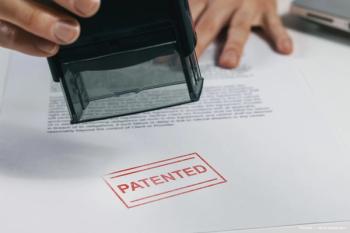
Study: Hydrogel sealant better than sutures
In a randomly assigned study, including 487 eyes with a leaking clear corneal incision after cataract surgery, closure with a hydrogel sealant was significantly more effective than suturing for preventing fluid egress and was associated with significantly fewer adverse events.
Take Home
In a randomly assigned study, including 487 eyes with a leaking clear corneal incision after cataract surgery, closure with a hydrogel sealant was significantly more effective than suturing for preventing fluid egress and was associated with significantly fewer adverse events.
By Cheryl Guttman Krader; Reviewed by Terry Kim, MD
Durham, NC-Many clear corneal incisions leak after uncomplicated cataract surgery and use of a hydrogel sealant (ReSure Sealant, Ocular Therapeutix, Bedford, MA) offers significant safety and efficacy advantages compared with suturing for stopping fluid egress from these leaking incisions, according to recent study results.
Terry Kim, MD was a clinical investigator in the large prospective, randomly assigned, controlled study.
“This is a robust, landmark study that objectively investigated leakage of cataract surgery clear corneal incisions,” said Terry Kim, MD, professor of ophthalmology, Duke University Eye Center, Durham, NC. “Considering the study design and size, its results showing the advantages of the ocular sealant for preventing leakage compared with the current gold standard of closure with suture placement are especially impressive.”
Dr. Kim was a clinical investigator in the large prospective, randomly assigned, controlled study.
Results
The findings from the study included 487 patients with an intraoperatively-identified leaking incision who were randomly assigned 5:3 to incision closure with the ocular sealant (n = 304) or suture (n =1 83).
Findings from testing of incision competency performed on postoperative days 1, 3, 7, and 28 showed leak rates of 4.1% in the sealant group and 34.1% in the sutured controls (p < 0.0001).
There were also highly statistically significant differences favoring the sealant versus suture group for the rates of study device-related adverse events (1.6% vs. 30.6%) and any adverse event (22.7% vs. 45.4%). In addition, the sealant was found to be both surgeon- and patient-friendly, as 94.1% of the investigators rated it as easy or very easy to use and patients found it comfortable overall.
The hydrogel ocular sealant is prepared just prior to application by mixing a proprietary polyethylene glycol polymer with a diluent-activating solution. The resulting liquid is applied to the entirety of the incision using a supplied applicator. It forms a pliable, adherent gel less than 30 seconds after application.
“Time is money, and applying the sealant is much easier and takes less time than suturing,” Dr. Kim said. “In addition, whereas suturing with 10-0 nylon requires a follow-up visit to remove the stitch, the ocular sealant simply sloughs off after re-epithelialization.
“The ReSure sealant is soft and lubricious after applied on the eye, which is why patients were comfortable in the study,” he continued. “The sealant does not require use of a bandage contact lens or corneal shield to enhance patient comfort, unlike a cyanoacrylate or fibrin glue.”
The patients screened for inclusion in the study had all undergone uncomplicated cataract surgery performed through a ≤3.5-mm clear corneal incision.
Stromal hydration was allowed at the end of the case and was performed by most surgeons. Then, Seidel testing was used to identify leakage that was either spontaneous or developed with up to 1 ounce of applied force. Leakage with force was evaluated using a calibrated force gauge that applies force to the eye in 0.25-ounce increments.
The 1-ounce threshold was chosen based on a previous study showing that it simulated IOP fluctuations caused by patient manipulation of the eye [Masket S et al. J Cataract Refract Surg. 2013; 39(4): 511-8].
Prior to randomization, 50% of eyes had a spontaneously leaking incision and another 26% developed leakage with ≤ 0.25 ounces of applied force.
“The finding that 76% of incisions leaked spontaneously or with very minimal provocation should really raise eyebrows, especially considering that the investigators participating in this study were all skilled cataract surgeons,” Dr. Kim said. “Recognizing the many potential complications associated with a leaking incision, including epithelial ingrowth, corneal edema, and hypotony that can affect IOL position, these data should raise awareness of these issues for surgeons who do not routinely check for incision leakage or who do not do so in a standardized fashion.”
Terry Kim, MD
Dr. Kim is a consultant to and shareholder of Ocular Therapeutix.
Newsletter
Don’t miss out—get Ophthalmology Times updates on the latest clinical advancements and expert interviews, straight to your inbox.


















































.png)


